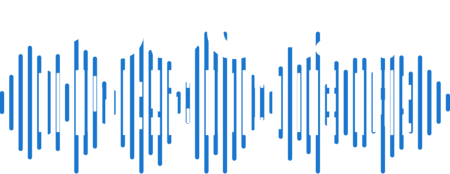 The No. 1 question new podcasters often ask is: “How long should my podcast be?” The answer is… we don’t know. But we can say this: Your podcast content can be as long as you want — but don’t bore your audience. Before you sit down in front of a microphone, make a plan for your podcast.
The No. 1 question new podcasters often ask is: “How long should my podcast be?” The answer is… we don’t know. But we can say this: Your podcast content can be as long as you want — but don’t bore your audience. Before you sit down in front of a microphone, make a plan for your podcast.
Some podcasts go directly to the content. No introduction, no opening music.
This is not the preferred method. Introductions and openings bring your audience into your podcast, establish your perspective and create expectations in your listeners. You don’t need to be a professional or an expert to do a podcast, but you do need to explain your angle to the audience to help them understand who and what’s going on.
But that’s not where you have to start when developing your podcast content. Many people get frustrated because they don’t know where to start. Instead, start with the end in mind.
Podcast Content 1: Figure out your exit strategy
I’m not talking about how to sell off your podcast. I’m asking what you want the audience to do when they’re done listening to your episode. The call to action tells the audience what to do next. Do you want them to:
- Rate and review?
- Follow (or subscribe to) your podcast?
- Tell a friend about this podcast?
- Do a specific task related to your podcast?
Be thoughtful about this call to action. Despite all the outdated advice that’s out there, ratings and reviews don’t do much to help your podcast. Five-star reviews are unlikely to draw more people to your podcast. Rather reviews — especially fewer than five stars — tell you what your audience thinks about your podcast. Important information, yes, but is there a more important action that will help you grow? Studies have shown that word of mouth builds more audience growth than anything else. The request to share your podcast with even one person has more effect than a request to rate and review.
Podcast Content 2: Build Segments
Unless your podcast is short, it’s likely that you will develop your podcast content in segments. Plan ahead: How do you want to present your content? How is your listener going to hear it?
You’ve seen segments in late-night television, news shows, movies, everywhere. NPR has been using segments since the beginning of its news programs. NPR coined the phrase driveway moments decades ago to describe a story so captivating that we would sit in our cars until that segment ended. Podcasters know that our content can follow the audience into the house, but that kind of magnetizing content should be our goal. How can we do it?
Breaking your podcast content into segments allows you to create unique sections and gives you flexibility in production. A 30-minute podcast could have three eight-minute sections that can be recorded and produced at different times then assembled with an opening and closing. If you’re working with time constraints, this may be a way to flex your schedule. It gives you the time to fully develop your content.
Segments also give you the chance to discover what works. You can experiment with your content — will this segment resonate with your audience? Do you get positive or negative feedback?
Instead of committing an entire episode to content that might inadvertently drive away your listeners, you can try it out as a small segment. Using Blubrry’s Advanced Statistics, you can discover what your audience is listening to, what they skip and if/where they quit your podcast. That data will offer valuable insights into your segments.
Podcast Content 3: Craft Your Opening to Woo Listeners
If you’re a podcaster, you probably have higher standards than the average listener regarding the sound of your podcast. (If you’re a new podcaster — it will come to you.) But equally important to the quality of your sound is the excellence of your lead. Do you create an opening that will attract the listener? Or are you “keeping it real” when you shuffle papers around, producing an opening that wastes your listener’s time?
Often in the process, you’ll find that you have created some loose ends that you’ll want to resolve at the end of your podcast. Don’t record your call to action and closing first — prepare it first, but plan to revisit it before recording. Make sure your call to action matches your opening. Your podcast will produce a more satisfactory ending for your audience when you wrap everything up cleanly.
The strength of a good opening doesn’t happen by accident. When you lay out your opening, you create expectations in your audience of what will be in your podcast. If your opening tantalizes them, you’ll keep them on your podcast longer. You’ll build up a fanbase that will share your content with others.
Your podcast content reflects who you are and how much you value your audience.
Taking the time to develop and edit your podcast content gives your audience the best possible experience, will build your audience, pump up your credibility and advance your podcasting career.
These three keys to developing your podcast content are helpful whether you’re a newbie or a seasoned podcaster who needs a refresher. If you need more tips, be sure to check out the free, online Blubrry Podcast Manual for additional insights.
____________
 Kim Krajci, host of Toastmasters 101 podcast, has been podcasting for 7 years and writing since the creation of the stylus and clay tablets. She also teaches speech and debate and works as a social media manager.
Kim Krajci, host of Toastmasters 101 podcast, has been podcasting for 7 years and writing since the creation of the stylus and clay tablets. She also teaches speech and debate and works as a social media manager.





